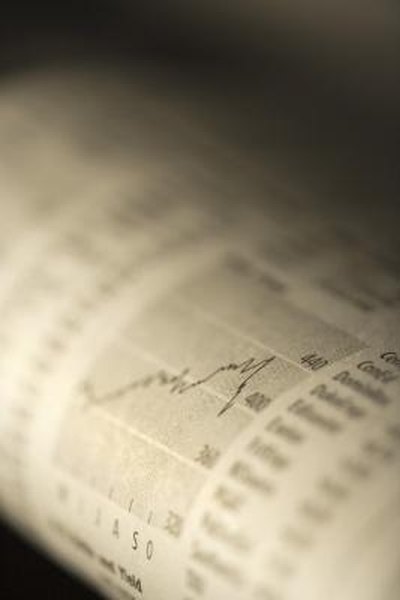How Low Can the Stock Market Go?
Down days in the stock market can be dramatic.
Thinkstock/Comstock/Getty Images
In theory, there is no limit to how far the stock market can decline. The stock market crash of 1929 ended up with an almost 90 percent loss of market value when that bear market was finished. Although investors expect the market to increase over time, values can and do drop. A look at the worst days and periods in stock market history can provide a framework for potential losses in the market.
Individual Stock Bankruptcy
If a company in which you own stock declares bankruptcy, you probably will lose 100 percent of your investment. Common shareholders are last in line to make claims on a bankrupt company's assets. If a company cannot pay its bills, bankruptcy allows the company to renegotiate with its creditors and work out a payment solution. Shareholders are generally not part of that solution. A visible example was the 2009 bankruptcy of General Motors, when investors in GM stock lost everything.
Worst Stock Market Days
Big one-day declines can create a high level of fear among investors. In recent history, the largest single day percentage decline occurred on Black Monday, Oct. 19, 1987. On that day the Dow Jones Industrial Average dropped by 508 points or 22.6 percent. At that time, the Dow started the day at about 2200. The DJIA has experienced 13 larger one-day point declines from higher starting levels. At the time of publication, the 778 point drop on Sept. 29, 2008, holds the points record, but it was just a 7 percent decline in the value of the index.
Bear Markets
A bear market is when the stock market as a whole declines by 20 percent or more over an extended period. Historically, bear markets have lasted from a few months to a couple of years. The recent October 2007 through March 2009 bear market was one of the more damaging bear markets in terms of value loss. During this period, the DJIA declined from just over 14000 points to about 6600, a 53 percent drop. In fact, 2008 was the worst year for the Dow Jones since the 1930s, with a 33.8 percent decline.
Market Recoveries
Each time the stock market has experienced a large decline, it has eventually recovered. The DJIA stood at about 300 points before the 1929 market crash and trades at around 13000 in 2012. Recoveries typically take several years, and investors who buy when the market had dropped dramatically have been rewarded with attractive gains. After a large stock market drop is not the time to sell your stock shares.
References
Writer Bio
Tim Plaehn has been writing financial, investment and trading articles and blogs since 2007. His work has appeared online at Seeking Alpha, Marketwatch.com and various other websites. Plaehn has a bachelor's degree in mathematics from the U.S. Air Force Academy.

